

Solar Data
One of the main strengths of the Solar System Physics group at Aberystwyth University
is the development of new data analysis tools for solar observations. This data archive is a repository of images
and information gained from the analysis tools, intended to aid researchers in investigating solar coronal phenomena
and characteristics. It also provides access to image processing software, allowing researchers the option to apply
to their own data. If you use these products or software, please cite the relevant publication and this website.
We are also heavily involved in scientific eclipse observations, which feeds into many of the scientific studies highlighted
in the news section of our homepage. All of our processed data is based on the observations
of several excellent space-based instruments. Links to these instruments/missions are available at the links page.
Coronal Density Maps
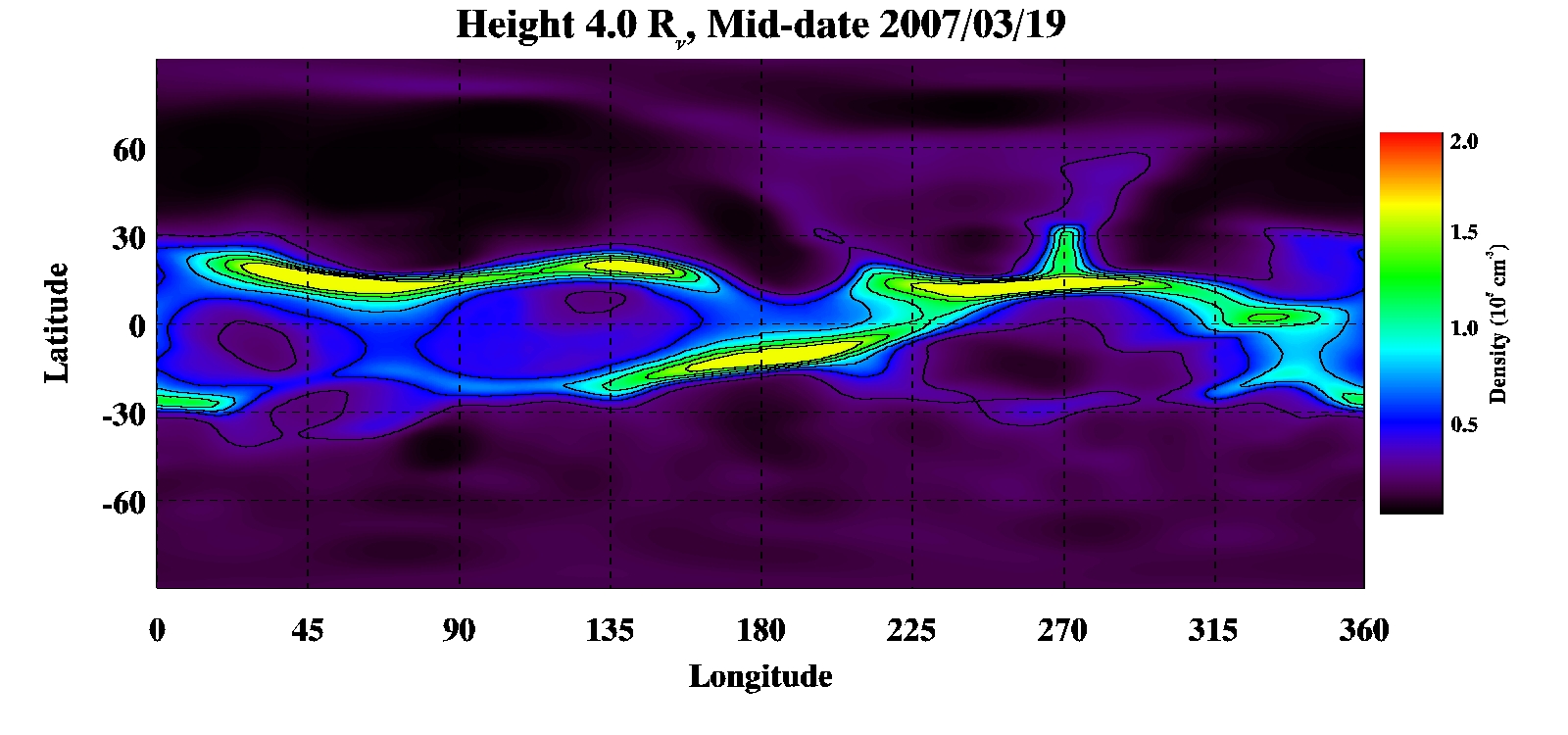
Data (IDL Save files & JPEGs): Archive
Overview
Coronal rotational tomography is used to estimate the electron density of the coronal plasma. The novel tomography method, developed in Aberystwyth, is based on several advanced data processing and calibration steps applied to coronagraph image data (Morgan, 2015); a spherical harmonic-based regularized inversion method (Morgan, 2019); and further refinement steps (Morgan, 2020). Please cite these papers if you plan to use the images or data for your own work.
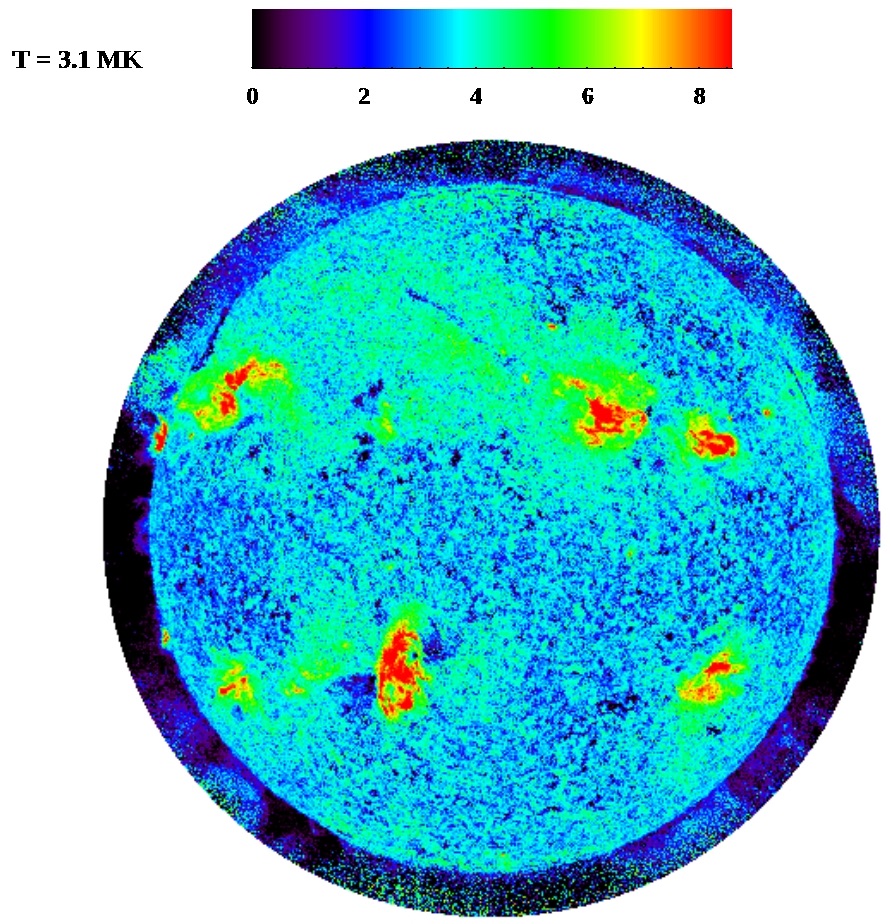
Differential Emission Measure (DEM) Maps
Archive: Archive
Overview
Multi-wavelength extreme ultraviolet (EUV) solar observations made by AIA/SDO allow us to estimate emission as a function of temperature for the low corona. To do this, we use a novel inversion developed in Aberystwyth (Morgan & Pickering, 2019). An essential consideration in developing this archive is computational efficiency. The maps are therefore created using an efficient implementation that grids the input data, thus reducing the number of DEM inversions required for calculation (Pickering & Morgan, 2019). The maps are produced from the AIA 'synoptic' data, and a full-disk inversion is provided every 3 days or so, starting at May 2010.
MGN Image Processing
Download: mgn.pro (Requires IDL 8.2< and an SSWIDL environment )
Docs: READ_ME
Overview
The Multiscale Gaussian Normalization(MGN) technique (Morgan & Druckmuller (2014))
is used to process solar EUV images. This technique aims at revealing information that is hidden in unprocessed EUV images by enhancing small-scale
structure and overcoming the problem of revealing information in dark and bright regions simultaneously. It normalizes an image by using a local mean
and standard deviation calculated using a Gaussian-weighted sample of local pixels at multiple scales. The final image is a weighted combination
of the normalized components and the original gamma-transform image, and is very effective at revealing faint fine-scale details on the disk and
off-limb regions.
The MGN software is available for download at the link above, and is compatible with all current distributions of IDL in a SolarSoftware (sswidl)
environment. A read-me is also available.
Data Products
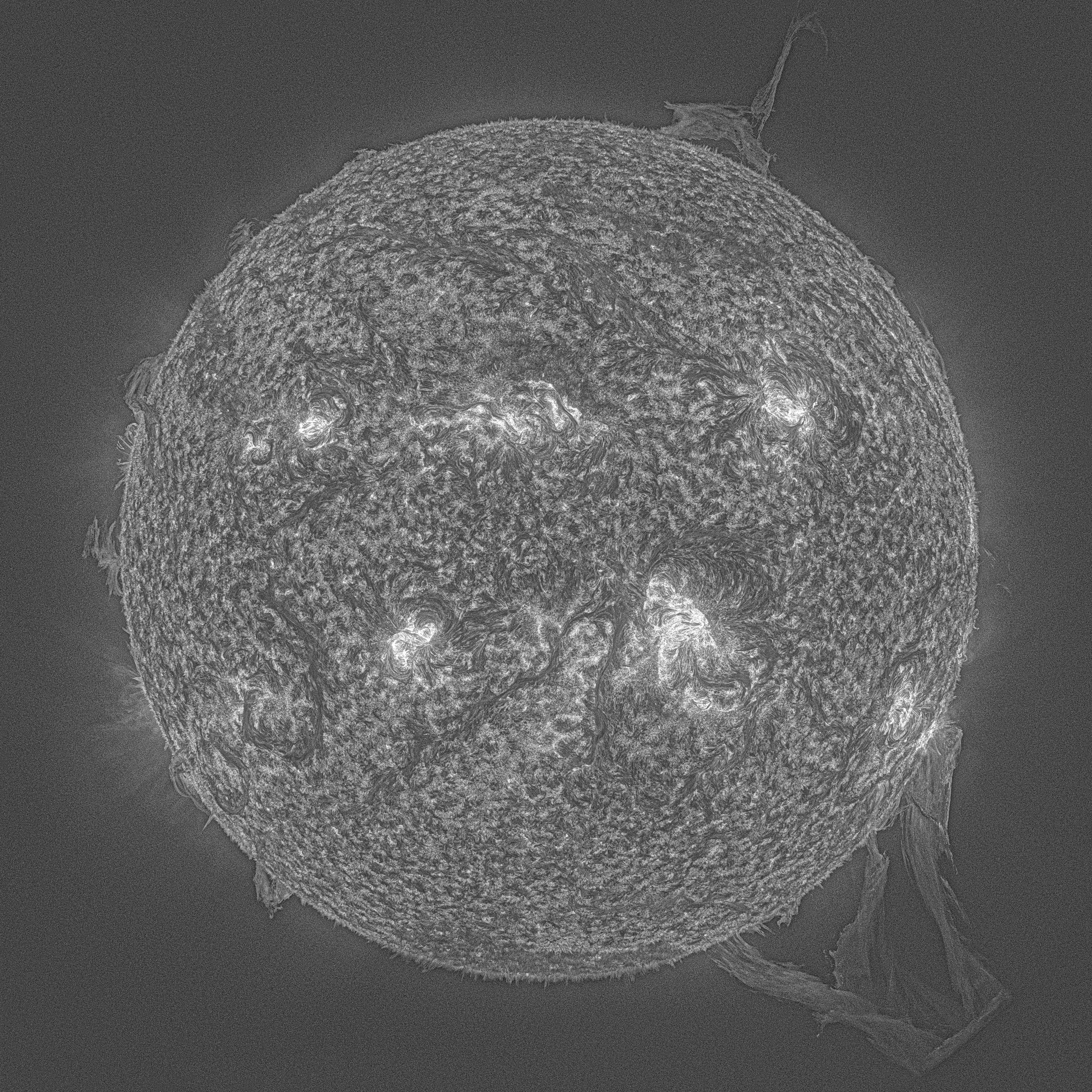
AIA/SDO Full Resolution
- MGN-processed full-resolution AIA images
- Processed images available for 7 AIA channels
- 3-color (RGB) images combining data from 3 channels (171, 193, 211)
- Note that this image archive is not complete
- Images available in 3 sizes:
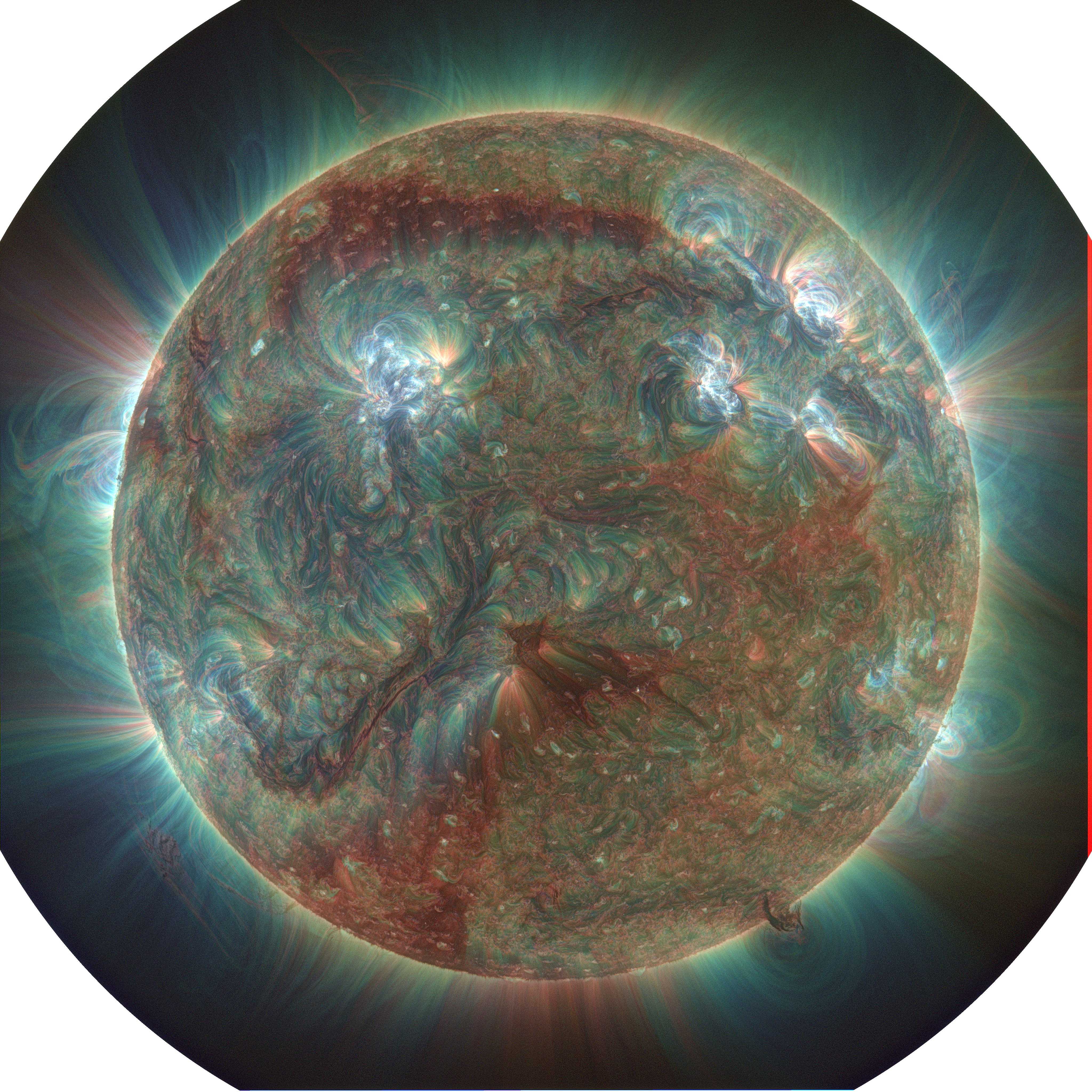
AIA/SDO Synoptic
- AIA synoptic data is a valuable reduced-size archive provided by the Stanford JSOC service. These images lack the spatial clarity of the full-resolution observations, but enable us to provide MGN-processed images for every 10 or 30 minutes
- Processed images available for 7 AIA channels
- 3-color (RGB) images combining data from 3 channels (171, 193, 211)
- Images available here
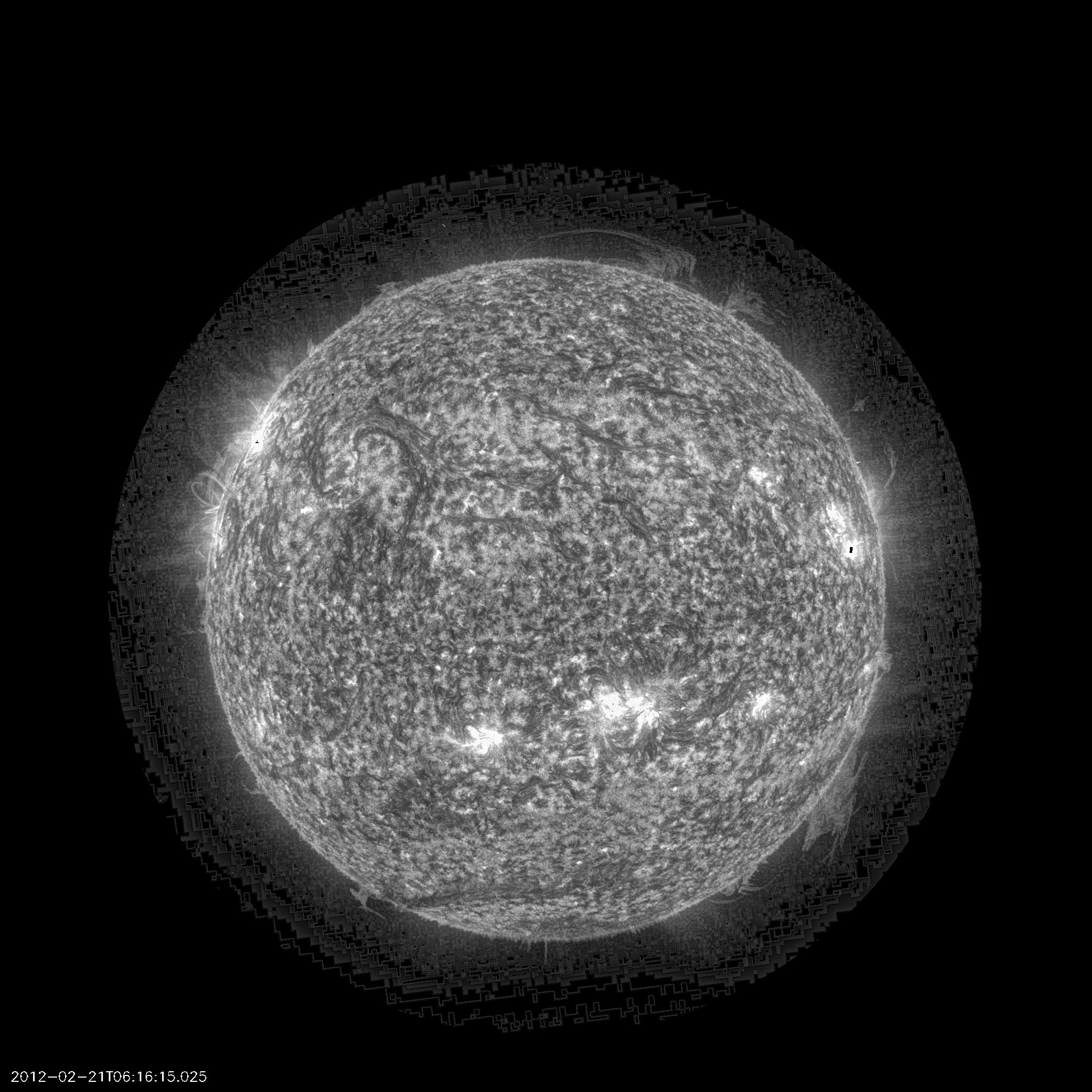
STEREO/EUVI
- The STEREO/SECCHI Extreme UltraViolet Imagers (EUVI) provide 2048x2048 images of the low corona in 4 wavelength channels
- Here we provide MGN-processed images for every 2 hours
- Processed images available for 3 channels
- 3-color (RGB) images combining data from 3 channels (171, 195, 284)
Images available for both STEREO A and B spacecraft:
- EUVI A
- EUVI B
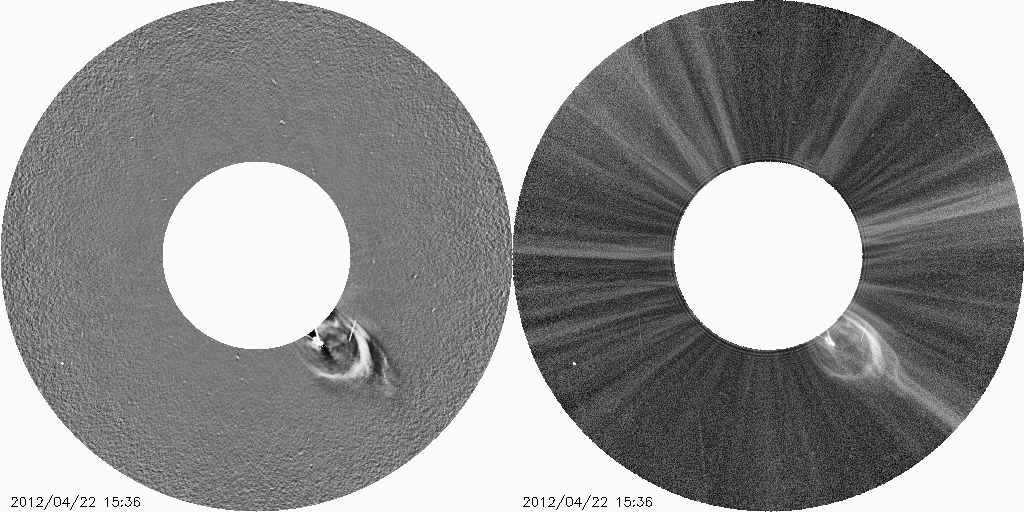
DST and NRGF Image Processing
Overview
The Dynamic Separation Technique (DST, Morgan, Byrne & Habbal (2012) )
is a new technique based on spatial and time deconvolution of coronagraph data. It is an effective separation of the dynamic and quiescent
components of the images. The structure of CMEs are revealed in detail despite the presence of background streamers that are several times
brighter than the CME.
The normalized radial graded filter (NRGF, Morgan, Habbal & Woo (2006) ) is a
simple filter for removing the radial gradient to reveal coronal structure. Applied to coronagraph data, the NRGF produces images which are
striking in their detail.
Data Products
- LASCO C2, C3 and C2/C3 combined images available
-
The DST-processed images are also available in fits format to enable analysis. Please contact
the team if you are using these files for science. They are suitable for detection and display, but NOT for mass analysis. Another set of
DST-processed images, which we can provide for specific events, is suitable for mass estimates.
- LASCO C2 images
- LASCO C3 images
- LASCO C2/C3 composite images
- LASCO C2 fits files
- LASCO C3 fits files
- STEREO COR2 A images
- STEREO COR2 B images
- STEREO COR2 A fits files
- STEREO COR2 B fits files
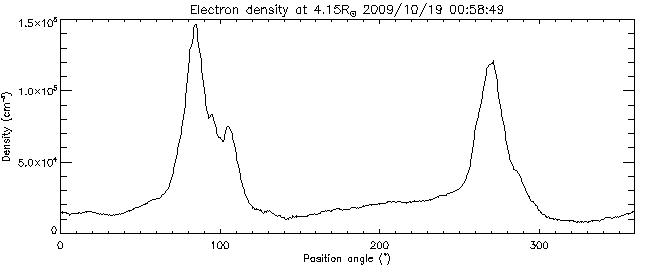
Electron density from LASCO C2
Download: IDL Save Files
Overview
LASCO C2 polarized brightness images are calibrated (using stars) according to the methods of
Morgan (2015). These are then inverted, assuming a local spherical symmetry,
into an estimate of the coronal electron density. These are IDL save files, containing structures with polar-coordinate arrays of electron
density and are available at the link above.
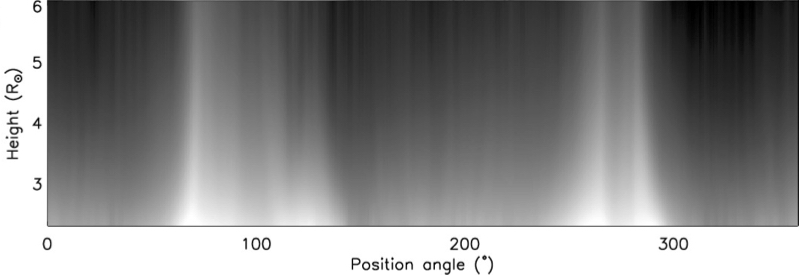
Calibrated LASCO C2
Download: IDL Save Files
Overview
Data processing and calibration is applied to LASCO C2 observations according to the method described in
Morgan (2015). The methodology includes noise suppression, background subtraction
and conversion of total to K-coronal brightness. These are IDL save files, containing structures with polar-coordinate images and are available
at the link above
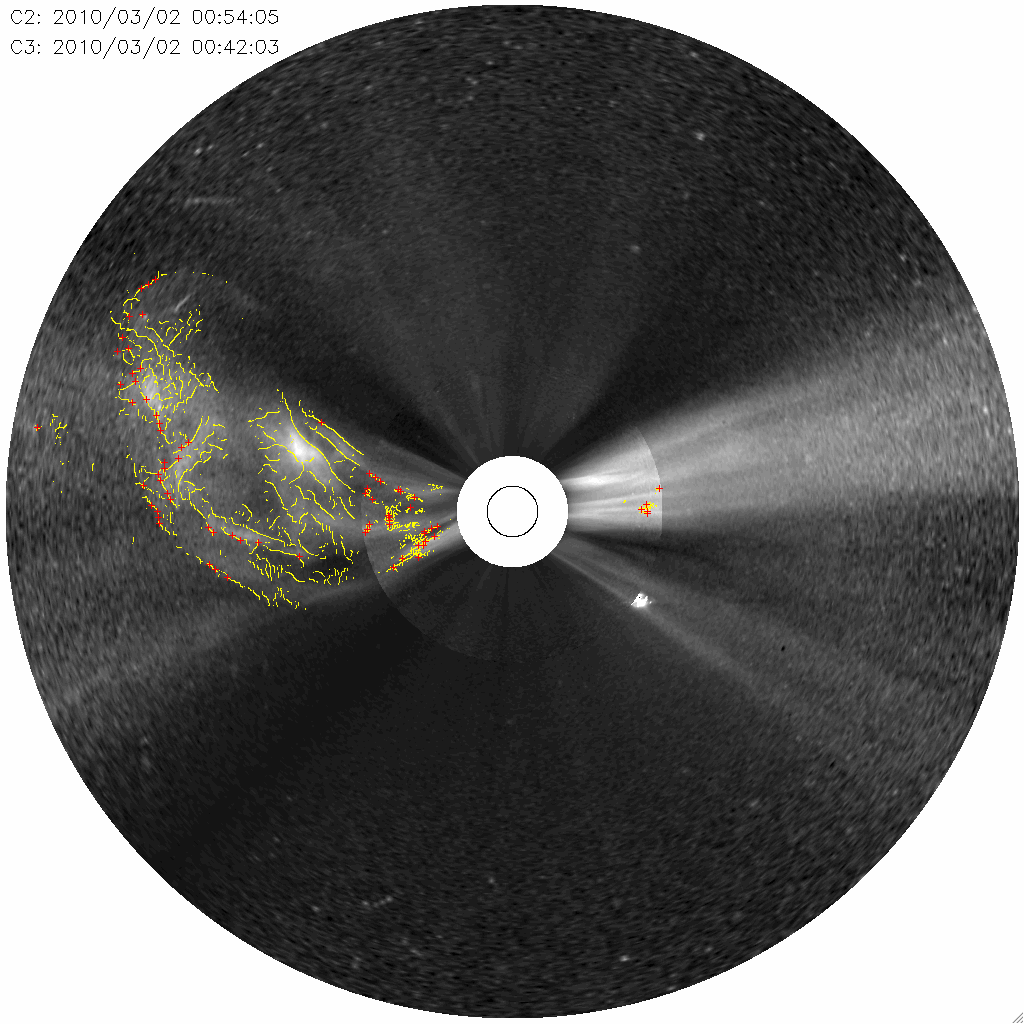
CORIMP CME Catalog
Overview
The coronal image processing (CORIMP) CME catalog is generated from the automatic detection
and tracking of CMEs in images from the Solar & Heliospheric Observatory Large Angle & Spectrometric Coronograph experiment
(SOHO/LASCO). The catalog utilizes a normalizing radial-graded filter (NRGF, see above)
that removes the steep gradient in coronal brightness.
A deconvolution technique is used to remove the static background, separating dynamic and quiescent structures. A multiscale decomposition
then results in a number of scales upon which the images can be automatically inspected for curvilinear features. Detection masks are generated
to isolate CME structure, and a sequence of observations then reveal the changing CME kinematics and morphology.
References
Details available in the following publications (please cite these two papers if using the catalog):
The Solar Data Archive is run by a team of scientists within the Solar System Physics reasearch group of Aberystwyth University,
led by Dr Huw Morgan.











